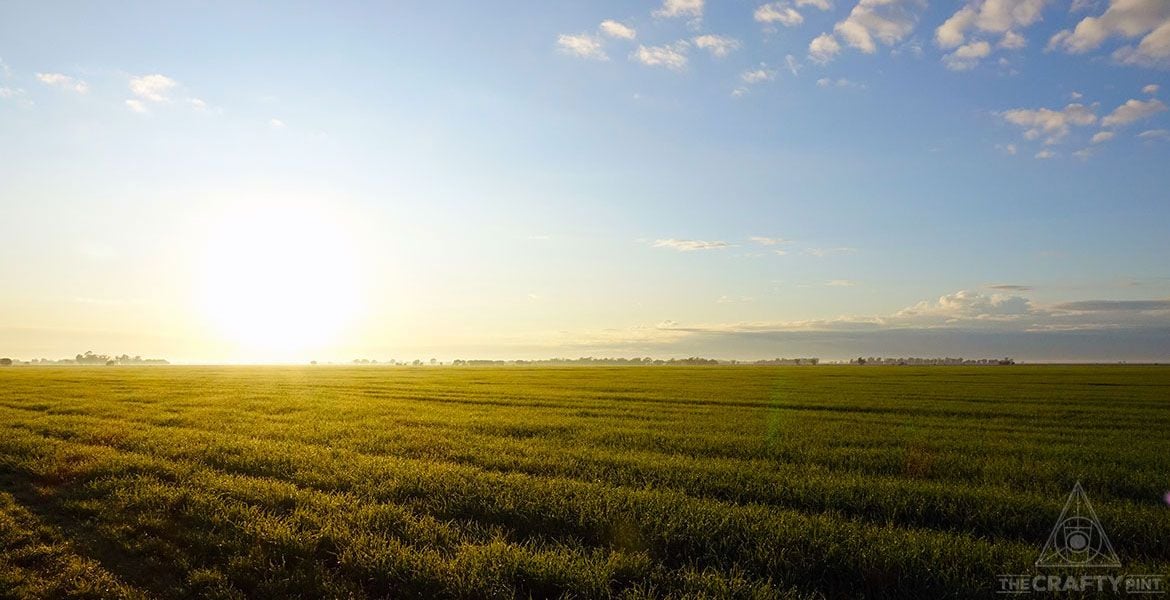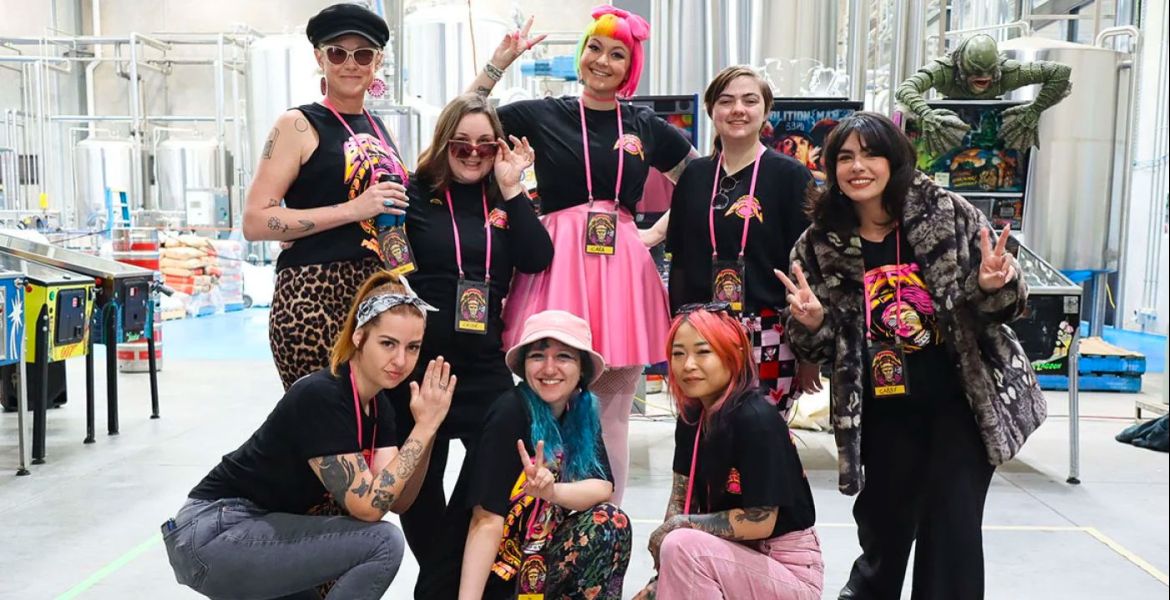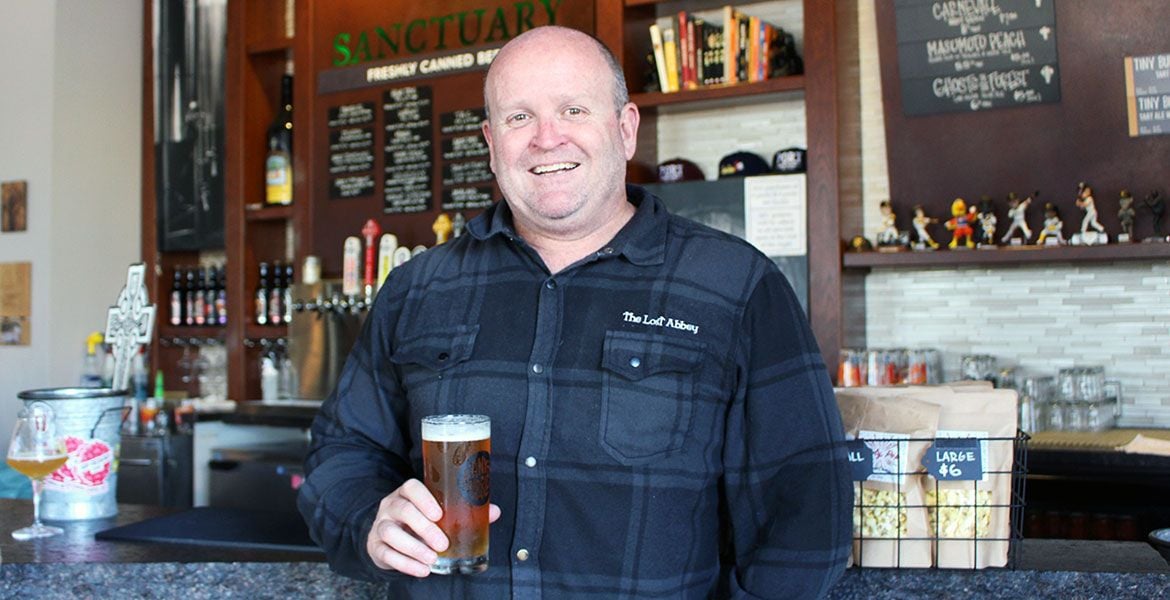“Beer consumption in America is flat, it might even be declining… Drinkers under 40 years old drink less, but better. Some 25-year-old would go out with the guys and drink ten Miller Lights. They drink three IPAs now.” Michael Roper, owner of Hopleaf, Chicago.
“On one level [independents] can't compete. In terms of the sports bars, concerts, music venues, chain restaurants, they’re going to be locked up by the likes of AB and Miller.” Josh Noel, American beer writer.
“We think, over time, there’s going to be a shake up and not everyone is going to stay open.” Ken Stout, CEO of Goose Island.
The above quotes describe some of the most pressing issues facing the American craft beer industry. Yet they could all as easily apply to Australia.
While more people are falling deeper in love with beer, as a whole we’re drinking less of it. Here, beer consumption has been sliding lower and lower for years. Market access is a perpetual challenge for small, independent brewers. Quality could be better. Consumer education needs to be. And, as we’re already starting to see, some brewing companies won't be around much longer.
Given one of the most common tropes beloved by the local craft beer industry is that Australia is *enter number between five and 20* years behind the US and faithfully follows wherever it goes, the fact the American industry’s once rampant growth is slowing is likely to be cause for concern.
There are few complaints when American brewers are inspiring local brewers to make hoppier or juicier IPAs, experiment with barrels or line the walls of their venues with tap after tap after tap. But, if sharing America’s path to the future means more major brewery buyouts/sellouts (delete as per personal preference), closures, increasing rancour and bitter public debate, perhaps it’s time to stop playing follow the leader.
The problem with that, of course, is that no one knows for sure where the industry is heading. Quite what the Australian beer landscape will look like in five years is impossible to predict, given how the narrative is constantly shifting. In the past few weeks alone we’ve reported on the travails of a recent champion brewer followed by a joyous cri de coeur in Parliament House in favour of levelling the playing field for small brewers, only for that to be followed by more news of brewers seeking financial assistance.
On one level, craft beer is becoming increasingly globalised. On another, it’s never been more local. For many, the term “craft” has been usurped by “independent” when trying to define the battle lines, yet even independence has become a slippery term; is it OK, for example, to take huge investment as long as it’s not from a major brewery?
Yet strip away such abstract discussions and it’s increasingly clear that the effects of the squeeze in the US are already being felt locally.
In May, Melbourne’s Good Beer Week attracted an unprecedented number of representatives from international breweries and leading the way were the Americans. Among its nigh on 300 events, the week includes the country’s biggest standalone beer event in GABS alongside the Australian International Beer Awards – the second largest competition of its kind in the world – so there’s plenty of pull to attract overseas guests. But, for the larger American brewers in attendance, there's a push factor too, with Australia part of a growing focus on export markets as growth tapers off at home.

Grant Wearin of Modus Operandi in Sydney’s Northern Beaches, recently got a view of this from the other side: “I went to the Craft Brewers Conference [in the US in April] and the message from Americans is that the boom years have dropped off or finished. That was somewhat of a consensus: the years of free and easy growth have definitely stalled.
“So what you have got, very different to Australia,” he says, “is an excess of production capacity. In Australia, we’ve got a shortage of production capacity. In a slowing market [like America] it only takes a second year sales guy to work out that Australia is growing quicker so there’s growth available by exporting.”
For years now, local drinkers have welcomed shipments from reputable American craft breweries, with many of those beers helping to inspire and raise the bar for local brewers. And now the biggest players are joining in.
Last month, we looked at the arrival of the world’s largest beer company, AB InBev, within the Australian craft beer landscape, via Carlton & United Breweries (CUB) and with Chicago brewery Goose Island as the lead brand. Since then, we’ve touched upon on similar moves by Heineken International and its flagship purchase, US brewery Lagunitas, in New Zealand, while the issue of flexible best before dates on US imports has been debated keenly too.
“Australia is a very exciting craft market, with a huge amount of diversity,” says Eric Ottaway, CEO of Brooklyn Brewery, the New York City based business that’s been building its presence here for a number of years and brews its flagship Lager at Coopers in South Australia.
“It's the most advanced craft market on this side of the Pacific, so it's hard to think of having an active presence in the Pacific region without being in Australia.”
Given the ever closer ties between the two nations’ beer industries – not to mention the fact that Australia's small brewers have been closing the gap in terms of size, market penetration, diversity and quality – as craft beer enters its most turbulent period to date, it pays to take a look at the most advanced craft market on the planet and see what lessons, if any, can be learned.
After all, according to Sierra Nevada founder and co-owner Ken Grossman, following his recent visit to Australia: “I think we’re in for a few rough years in the US and Australia probably isn’t far behind.”
THE SQUEEZE
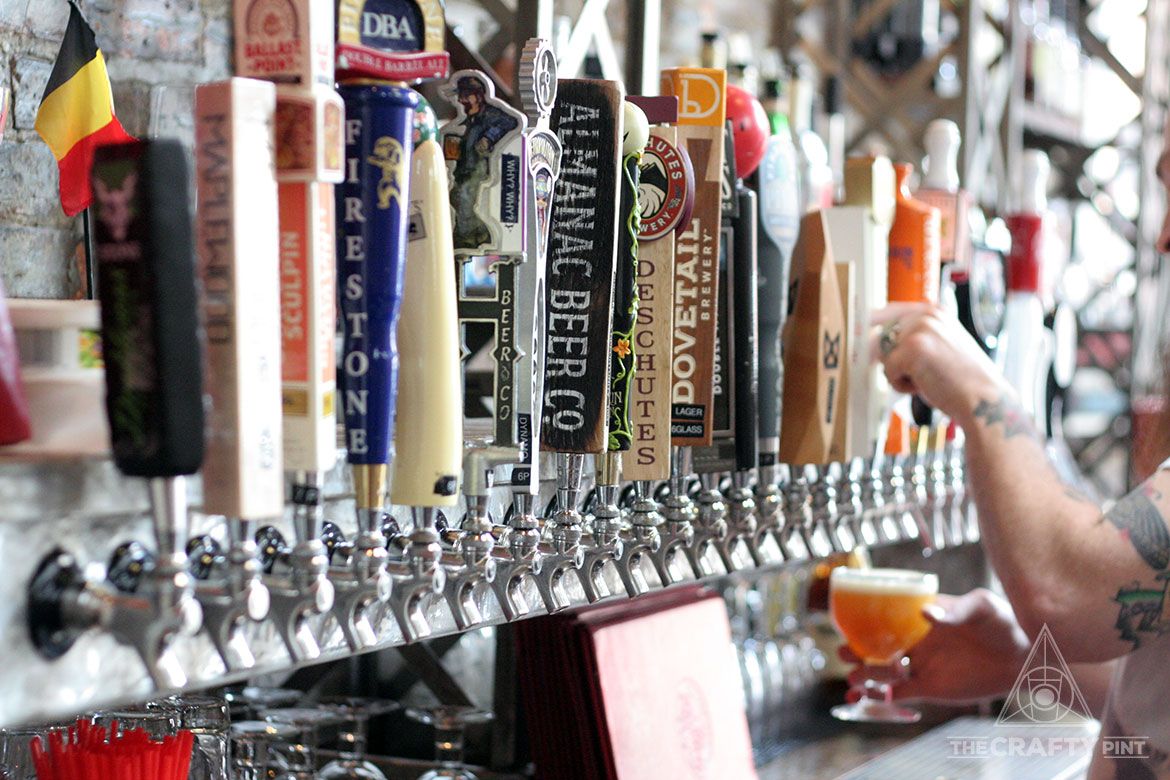
There are now around 5,300 brewing companies in the US with another 2,000 in the pipeline. In terms of volume share, in 2016 they accounted for 12.3 percent of all beer consumed in the States. These figures from the US Brewers Association (US BA) don’t include any of those brewers who have sold a share greater than 25 percent to a major brewer – the likes of Goose Island, 10 Barrel, Golden Road, Lagunitas, Ballast Point and Saint Archer, to name just half a dozen – yet it’s still a share that dwarfs what has so far been achieved by Australia's independent craft brewers.
The 2016 figure of 12.3 percent represents a mere 0.1 percent rise from 2015,however, despite 730 more operational craft breweries coming to life in that period. Between 2014 and 2015, the share grew by 1.2 percent; the previous year, it had risen even more significantly, from 7.8 to 11 percent.
The impact of slowing growth, increasing production and the fightback from the larger brewers and those brands no longer considered craft by the US BA is being felt in a number of ways. According to Chicago based beer writer Josh Noel, legacy breweries like Sierra Nevada and Deschutes are “struggling a lot right now. They’re getting squeezed from above and from below. Goose Island is eating their lunch, but so is Lagunitas. From below there’s a push for local and fresh.”
The same sentiments were found in a statement released by Stone Brewing when it laid off staff late in 2016 describing “tremendous pressures” upon the independent sector: “Specifically, the onset of greater pressures from Big Beer as a result of their acquisition strategies, and the further proliferation of small, hyper-local breweries has slowed growth.”
Downward pressure is also being applied to price. We recently ran a two-part Secret Brewer feature on the price wars in the Australian market and it’s happening Stateside too.
According to Michael Roper, who founded the iconic Chicago beer bar Hopleaf in 1992, in the early years of his bar, brewers would never price a keg above USD$99 (approximately AUD$130 at July 2017 rates). That steadily rose with the growth of craft beer to the point where USD$160 to $180 was average and specialties could command as much as USD$300. But now, driven by the incursion of the corporate brewers and expansion from larger breweries, it’s headed in the other direction.
“What if [a brewery] makes a flagship IPA, a pilsner, a couple other styles and they sell them for $120 a keg?” he asks. “It’s going to happen. And what if they take a six-pack price and offer a high quality beer for $4.99? That’s the way they’ll grow.
“What they’ll have to accept is what Bud, Miller, Coors and Heineken have accepted for a long time: volume with low margin. You sell the beer cheap and you make a lot of it. The margins on Bud Light are not good but they sell so much. It’s like a McDonald’s hamburger: if, every day, two percent of the people of the planet eat that shit, it’s a lot of money.”
As for where that could lead: “For the consumer, it’ll be a good thing. For me, as a retailer, it’s a good thing. For brewers, maybe not. I think a lot of breweries will go out of business.”
What does this suggest might lie in store for the Australian industry?
If you were to apply the US BA’s qualifications for what constitutes a craft brewer to brewing companies here, no calculation of craft beer consumption could include James Squire, Little Creatures, Kosciuszko, Matilda Bay, Yak Ales or Mountain Goat (again, to name just half a dozen brands). Take out all brands owned by CUB/AB InBev, Lion/Kirin, Asahi, the Australian Beer Co (Coca-Cola Amatil and Casella Wines) or the major supermarket chains and best estimates of volume share sit around the three percent mark – a quarter of the the level US craft brewers have secured.
What’s more, with 420 brewing companies believed to be operational in Australia, there is already a greater density of breweries per capita than the US. So we have a situation in which a greater number of breweries per capita are effectively fighting over just a quarter of the pie being served up in the States.
Price wars are already in effect in the more competitive urban markets, with venues looking to dictate price, particularly if they’re happy to forgo beers from the breweries who won’t play ball – often those that brew the best and most sought after beers. However, although some businesses are struggling in this environment, overall the industry remains in a growth phase.
Gordon Treanor, marketing director for Lion’s craft portfolio, believes the changing growth trajectory in the States is “probably a bit of a crystal ball for the Australian market. Not next year, but we won’t continue to see 20 percent year on year growth. We need to plan for that and think ahead.”
But, in the immediate future, he says: “We see enormous growth opportunities for craft over five/ten years in Australia. It’s an incredibly healthy and exciting industry in its own right.”

Yet James Atkinson, editor of Australian Brews News and winner of the 2017 AIBA Media Award (pictured above), says he crunched the same figures we did in terms of the number of breweries per capita in the two countries and believes: “There’s cause for concern.”
Brews News has been monitoring the number of new Australian brewery and brewing company openings in conjunction with beer historian Brett J Stubbs and counted 51 launching in 2016.
“I would be really surprised if that isn’t smashed – and maybe by some margin – this year,” says Atkinson.
He highlights four areas of potential concern. Firstly, craft brewers here have achieved far less market penetration than in the States. Secondly, there are far more brewpubs as a percentage of the total number of brewing companies in the US – almost 2,000 of the BA's count of 5,300 are classified as brewpubs.
“In Australia, the brewpub model has not been as enthusiastically taken up,” he says. “There’s a whole variety of reasons as to why that’s the case, but with so many [brewing companies] based around wholesaling you have to ask yourself, ‘Who is going to be buying all that beer?’”
Thirdly, he cites the existing duopoly and the likelihood that small brewers’ hopes of a change in the situation regarding tap contracts will be dashed. Even if the ACCC [Australian Competition and Consumer Commission] does in some way stop the practice of contract taps, he says: “If [Lion and CUB] are no longer investing in tap systems for contracted venues, as is currently the case, you would assume those savings would then come off the price of their kegs. Getting rid of tap contracts may bring other competitive challenges."
Finally, he says: “In this market, the big brewers and retailers have been much more proactive in responding to consumer demand for these ‘craft’ beers, whereas US brewers did not have the same foresight. That was why we saw this stratospheric growth in America. It’s debatable whether we will see the same growth in Australia because the big guys have given consumers products they want.”
He’s keen to point out it’s not all doom and gloom, however: “I think there will be some great success stories with breweries that come to the market for the right reason, have excellent beer and an awesome brand and a focus on their local market. If you’ve got patient capital and expand incrementally and in the right way there’s absolutely opportunities for new breweries to come into the market.”
THE FIGHT FOR INDEPENDENCE
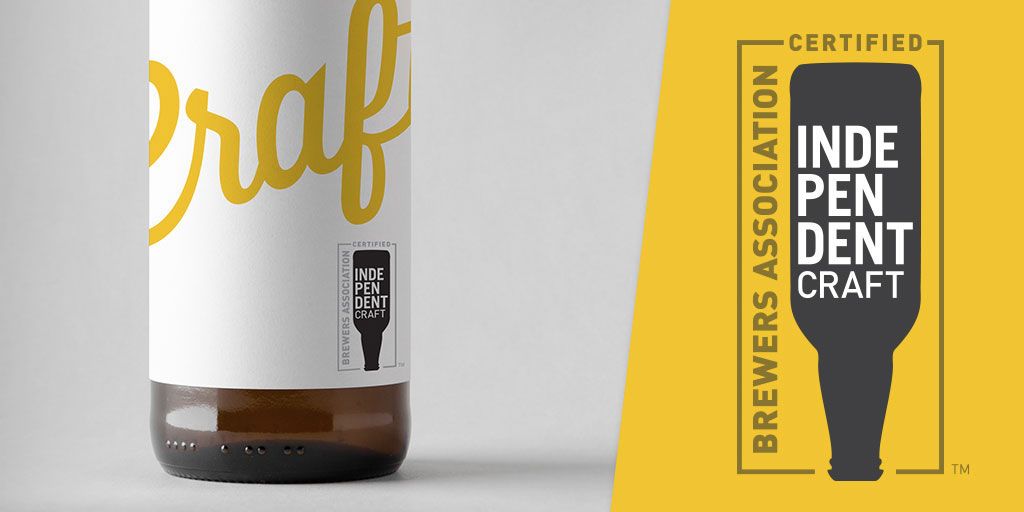
With the debate over what “craft” really means having been done to death, resuscitated, hung, drawn and quartered, then left for dead again – all without any concrete agreement – independence, or “indie beer”, has come to the fore as a cause to rally around. Just last month, the Australian body formerly known as the Craft Beer Industry Association booted out those members that had big brewery ownership and renamed itself the Independent Brewers Association (IBA). Since then, the US BA has launched its new “Indie Seal” for independent brewers to put on their packaging and marketing materials.
The IBA’s decision in Australia led to much debate and, in some corners, anger and angst. Yet the dialogue here, at least outside the more excitable parts of the beer world, remains civil when compared to what’s been developing in the US.
Ever since Goose Island was snapped up – “the first shot fired… the beginning of the beginning,” according to Noel, who should know as he’s writing a book about the Chicago brewery and how the beer world has changed in the wake of its sale – there has been growing animosity between those on either side of the fence daubed independence.
It’s easy to understand why passionate beer lovers have become increasingly strident. While AB InBev has been the most frequent shopper, snapping up ten smaller breweries in the States, not to mention the likes of Camden Town in London and Birra del Borgo in Italy, it's far from alone in adding high profile craft brewers to their portfolios, be that Heineken securing Lagunitas in two stages or MillerCoors with the likes of Saint Archer and Terrapin.
Yet the shocks here, such as when Little Creatures and White Rabbit become 100 percent owned by Lion or Asahi bought Mountain Goat, have, thus far, been rare compared to the steady stream of sales and partnerships announced in the States. Indeed, watching from afar, it’s possible to wonder if buyouts have become so commonplace they’re starting to be seen as part of the natural scheme of things.
Says Noel: “If you’d asked me that before the Wicked Weed sale, my answer would probably be different,” referring to the 2017 purchase of the North Carolina sour beer specialist.
“It’s almost as if people had become accustomed to it and accepted it, and I think people have accepted the reality that Anheuser-Busch is poised to become the biggest producer of craft beer in the United States – led by Goose Island, that will be happening in the next couple of years.
“But the Wicked Weed sale seems to have jarred something anew in people. Whatever complacency there was seems to have been dislodged and people are fired up again. The Wicked Weed sale really touched a nerve.”
Certainly, the level of discourse is frequently more heated than here and has spread beyond the buying of breweries. Recent revelations that AB InBev quietly acquired a share in beer reviewing website Ratebeer last year via its venture capital arm ZX Ventures (which was also involved in the formation of beer website October) or that same operation’s buying into homebrew supplier Northern Brewer have met with angry responses.
Opposition sometimes goes beyond mere words too. Josh cites one recent example of how the divide in the US has become partisan to the point of activism.
“[AB InBev] opened a 10 Barrel taproom in San Diego, which is one of the craft beer hotspots, and this guy set out to raise money through a Kickstarter to raise $900 to fly a banner around the brewery on opening weekend that said, ‘10 Barrel is not craft beer’. Within four hours he raised the money and ended up raising close to $5,000.”
Alternatively, you could look at the example of this year’s Funkitorium Festival. The annual celebration of sour and wild beers was founded by Wicked Weed in 2014 but, following the brewery’s sale to AB InBev, breweries such as Jester King began pulling out and, ultimately, the festival was cancelled.
THE "BAD DUDES"

Somewhere in the middle of this chasm between the big brewing companies and the independents are the people who have played a major role in widening it: those who’ve taken the big brewers’ coin. And the perspective they offer on the state of play is, as you might expect, quite different to that of the protestor with the plane.
Greg Hall is the son of Goose Island founder John Hall and was with the company from the beginning, spending much of his more than two decades there as head brewer and de facto chief innovator.
“I’m at the top of a lot of people’s list of bad dudes,” he says, when The Crafty Pint met with him in Chicago earlier this year. “I’m still the only guy in the country who's a two time loser.”
He is referring to the caste into which he was cast by some in the beer community when Goose Island sold to (what was then) Anheuser-Busch. Following that, he went on to found a new venture, Virtue Cider, and promptly sold the majority stake of that business to AB InBev too. In short, if you want to get the view from the bad dudes’ side, he’s got plenty to offer.
Leading into the 2011 sale, he says Goose Island was approaching a crossroads. Having opened in 1988, they’d done the hard yards and become the preeminent Chicago brewery. Beyond that, their pioneering in the US of bourbon barrel aged and wood and fruit soured beers, had helped the brewery build up national awareness and respect as well as contributing to changing discourse around what people perceived beer could be. They had a production brewery that had been scaled up three times, but was now running at capacity. The next move would be a big one, but they had options on the table.
According to Hall, the first was to stop growing, which would mean, at some point, having to cut back on supplying other states and eventually selling all their beer in Chicago. Second was contract brewing, a practice several of their peers were engaged in and which they investigated but ultimately decided against. Option three was building a new brewery, which would require taking on the kind of mountainous debt that had the potential, should a few sales quarters not meet expectations, to sink the business and undo a lifetime’s work. The positive in that scenario was a post-GFC environment where monied folk had pulled out of the market and were looking at alternative forms of investment. The capital was waiting on the sidelines if they wanted to take it. Then, says Greg, the phone rang.
“We got a call from AB, who we’d already had a strategy distribution agreement with, and they said, ‘Let’s do this.’ And we said, ‘Well, no. Only on this list of conditions,’ and they’re like, ‘Okay, okay, okay’, and went down the list. They basically met every condition.
“So it was a case of saying, ‘We can go and get banker money or get brewer money.’ Maybe they're not our favourite brewers, but they're brewers. So, not only do they understand what we're doing, they have expertise no one else in the world has. They know more about packaging lines, about malting, they own hop fields all over the world, they have the best distribution network.”
And it’s this, in essence, that has become one of the justifications regularly put forward by small brewers that have sold to larger ones: at least our new owner is a brewer too – regardless of what the public perception of that brewer may be. It’s a justification that’s become central to the debate over exactly what “independent” means too. By choosing to partner with a bigger brewer, the argument goes, it’s a case of the devil you know versus the anonymous investment group you don’t.
Indeed, outside the corporate acquisitions making headlines, such as the nine figures pumped into BrewDog earlier this year by San Francisco based TSG Consumer Partners, which has also invested heavily in Pabst Blue Ribbon, questions are seldom asked about who really owns small, independent breweries. Most are exactly as they appear: one man bands, husband and wife operations or something started by a group of mates. But, in other cases, drinkers may be surprised to learn that the person purportedly running the show – usually the brewer – is not the one calling the shots behind the scenes.
It’s no different to any other growth industry, where there will be people from all walks of life and with many different motives looking to get in on the action. But with that can come a whole raft of different issues, such as what drives the focus within the brewery. For now, however, independence remains dictated by the nature of the person pouring in the funds, the main argument being that investment funds – no matter how flush with cash – don’t have the existing market advantages over smaller players enjoyed by the dominant brewers.
The shades of grey don’t stop there, either. The nature of the big brewery doing the buying can be taken into consideration. And where exactly does something like Oskar Blues’ Fireman Capital Partners-backed purchase of Cigar City Brewing, Perrin Brewing and the Utah Brewers Cooperative sit?
“There's one brewery that’s been swallowing up brewers with no negative connotations at all: Duvel Moortgat,” says Roper.
“They own Boulevard, they bought Firestone Walker [who launched into Australia during Good Beer Week], they bought La Chouffe, De Koninck, Liefmans, Ommegang in New York state. This is a brewing empire that has never made a bad beer. It’s 100 percent family owned [and] the one company that’s growing really fast and swallowing things but no one thinks badly of them.”
DECISIONS, DECISIONS
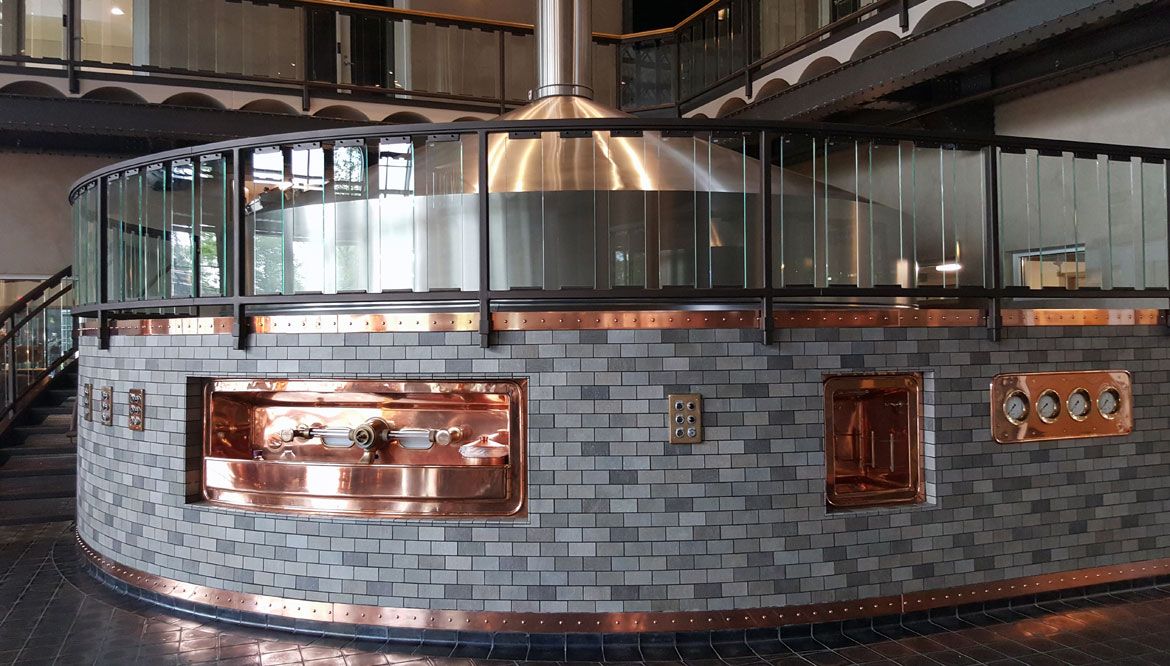
But back to the sale that started it all. Once the decision was made, a new line was drawn. In one jaw-dropping moment, the American beer landscape changed – as did Goose Island’s position within it, not least that they were no longer defined by the US BA as a craft brewer.
For the Halls, the benefits their decision brought to Goose Island outweigh the negatives.
“When we’re going to announce [the sale], we were all struggling,” says Hall.
“We were the first one. My father’s instinct was to say nothing’s going to change but I said, ‘Of course things are going to change. When’s the last year, since 1988, that two years were the same year to year? Every year things change.’ So that’s what he said.
“Were there changes? Yes. But the vast majority of changes are good for the business, good for the brewery, good for the beer, good for the people, good for the customers.”
For its part, AB InBev has so far followed through on whatever promises were made during the courtship. And then some. They have expanded the barrel ageing program to the point where it is one of America’s largest, given Goose Island its own hop farm and are taking the brand to the world.
“If they’d told me they were going to give us a barrel warehouse that holds 15,000 barrels (pictured at top of article) and a 1,500 acre hop farm – and we’re going to get Wilco to play there – maybe I would've stayed,” says Hall.
“For the 30th anniversary of Goose Island and Honkers Ale, [we’re going to] brew a version at Fullers – I mean, ‘Holy fucking shit!’ That’s where it started for me, taking a tour of Fullers. Only six years ago we barely aspired to be national. Now there are pubs in London, Seoul, Shanghai, Sao Paolo.
“It’s not like a dream come true, it’s like 20 dreams come true. Nobody could ever – ever – imagine even two of those things happening.”
Of course, you would expect someone associated with two businesses that have become part of AB InBev to see the positives in becoming a cog in a much larger machine. Indeed, the statements made by founders or former owners of breweries that have sold, and the media's coverage of them, are often what fans the fire for those on the other side of the fence, as encapsulated in one Paste magazine article that came armed with sharpened pitchfork and flaming torch.
For those that have resisted, there are often different values at play. Were Ken Grossman and his family to sell Sierra Nevada, which has started to see its sales in the US fall, you imagine it would make the anger vented over all previous transactions feel like a spot of mere teeth gnashing with a side order of shoulder shrugging.
“In some ways, sure, it might have been easier,” says Grossman of the prospect of selling to a multinational, “and I considered it once, but it’s just not the right thing for me or for Sierra Nevada.
“A lot of the things we have done – the solar array, our original fuel cells, our current micro-turbine systems, wastewater treatment plants – don’t have an immediate return on investment, but we do them because I, and my family, believe in them. If we had had to seek a board’s approval for those projects, we probably wouldn’t have gotten it.”
Explaining that the brewery’s green practices grew from its humble beginnings in his garage – “We had to be frugal and use resources wisely” – he adds: “I believe that it’s our responsibility to be good stewards of our environment. Sometimes there’s a cost associated with that, too, but remaining independent allows us to do things that don’t always make immediate financial sense.”
When sitting on a Good Beer Week panel on the future of craft beer hosted by Brews News, Grossman also offered his thoughts on the beers that would ultimately come out of larger breweries post-acquisition.
"If you want to make a truly craft sour or a bottle conditioned, dry-hopped beer, going and trying to push it through a big facility like that, it's not going to happen," he said. "Those beers will change.
"Undoubtedly, the ones that have been picked up and taken through those larger breweries will change. There's no question about that."
THE BIG END OF TOWN
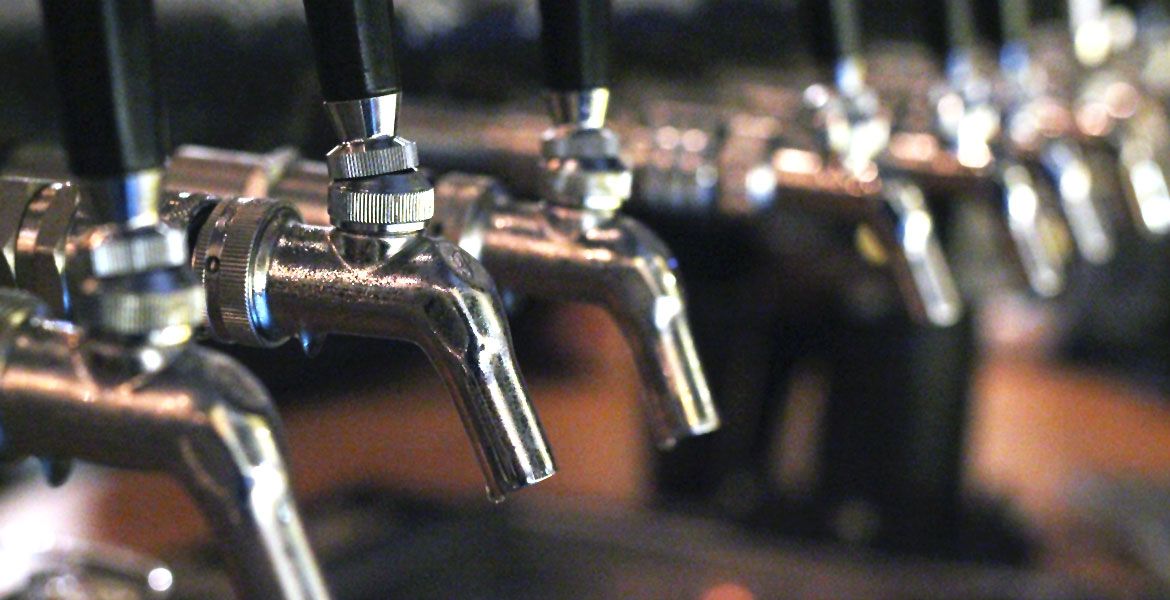
As Hall makes clear – and as Goose Island’s expansion into all corners of the beer world further emphasises – the benefits of becoming a favoured child within the AB InBev craft family are significant. Yet there are plenty of examples of how AB InBev and their fellow megabrewers go about trying to consolidate their market dominance – then expand it still further – that are causing consternation.
The ways and means in the US may differ from those practiced by big brewers here, but the intended end is usually the same: impacting market access.
One example from the States involves distribution. There, the industry is split into three tiers: the manufacturer making the beer; the distributor selling it to retailers; and the retailers themselves.
And, according to Noel, it's “quietly where all the impact is but the average drinker has no idea, because the distributors wield immense power.”
He explains further: “Each tier is supposed to be wholly independent. The rub with AB is that they own a dozen or more distributors themselves, in the states where that’s allowed, and they have a network of distributors that are supposed to be independent but have been very loyal soldiers to them for generations. So, in theory, there are three separate tiers, but especially when it comes down to Anheuser-Busch it gets a bit muddy and it’s more like two, or two and a half tiers, at times.”
The outcome can be that retailers end up offering customers more beers from those brewing companies – or give particular brands prime position on their shelves and in fridges. Here in Australia, the nearest equivalent would be tying venues to tap contracts – an issue that’s been debated at great length already and one on which the ACCC is due to report after a multi-year investigation. In short, they’re investigating whether the big brewers have been misusing their market power to keep other brands off taps and out of fridges.
Such practices would be referred to in the States as “pay to play” and are illegal, unlike here. Not that they don’t take place, as highlighted by recent high profile examples, such as the case in which the Craft Brewers Guild was hit with a USD$2.6m fine for its activities in Massachusetts, or the charge by the same state’s Alcoholic Beverages Control Commission earlier this year that AB InBev had offered close to USD$1m in “illegal incentives” to retailers.
Add in the allegation that, following its purchase of SABMiller, AB InBev had effectively bought all of the commercial hops in South Africa, thus being able to deny them to small brewers, and it’s easy to understand why fellow brewers and passionate drinkers bid farewell to once-loved brands when they become part of one of the handful of big brewers.
Yet such debate takes place within a small craft beer bubble. The vast majority of drinkers will be unaware of who owns what – even those on the hunt for a hoppy pale or IPA. Thus, smart purchases by the big brewers lessen the need to indulge in potentially anti-competitive practices as they’re able to offer choice, perhaps more accurately, the “illusion of choice” to consumers.
Over the years, we’ve chatted to, or seen status updates online from, many Australians travelling through the States rejoicing at the beers they’ve been able to drink in airport bars, at sporting stadia or flying between destinations. Often, however, those beers will all be owned by the one company.
It’s not a million miles away from, say, walking into a Dan Murphy’s – at least one of the chain’s non-premium stores – and, at first glance, being impressed by the craft beer selection. On closer inspection, you find the majority of beers there are owned by Lion, CUB, Asahi, CCA or an arm of parent company Woolworths itself, with independent offerings rather thinner on the ground.
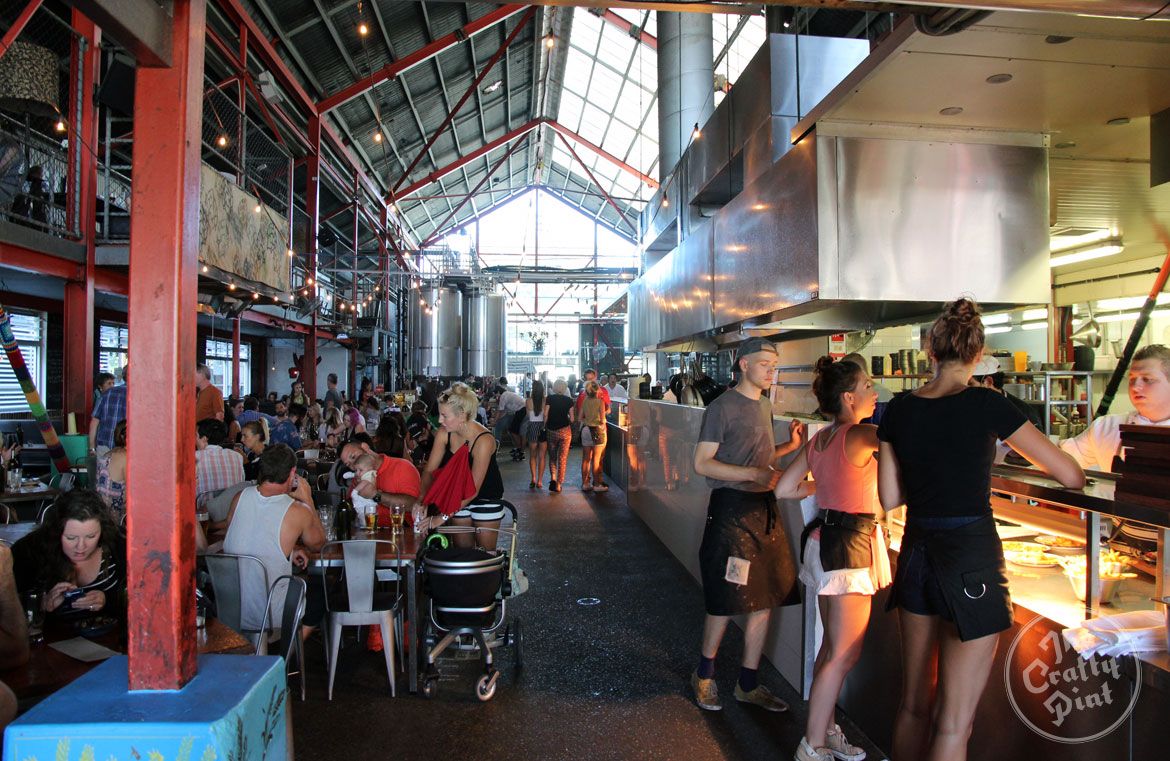
With Lion launching Malt Shovel as a separate entity designed to focus on getting its craftier brands, such as Creatures’ limited releases or those from Emerson’s and Panhead, into venues that usually focus on beers from smaller brewing companies – in a similar manner to the recently formed Beer Collective at CUB – we can expect to see independent brewing companies facing a greater fight for punters’ cash, at least that belonging to punters who don’t care or yet know who owns what. After all, even the most strident of indie beer lovers would likely be tempted to stop for at least one by a tap lineup featuring, for example, Little Creatures’ Dog Days, Dreadnought and Pale, White Rabbit’s Sour Red and a selection from Emerson’s and Panhead.
It makes for an interesting dichotomy, not least because educated craft beer drinkers may well look at how Little Creatures and White Rabbit have operated since the sale to Lion and acknowledge the positives – bringing new people into craftier beer styles via their impressive and welcoming brewery homes; looking to introduce sour beer to a wider audience via White Rabbit’s barrel program; winning major awards (Little Creatures Pilsner is the reigning Champion Australian Craft Beer and White Rabbit White Ale holds the equivalent AIBA crown) – while also being aggrieved at some of the practices of the wider business.
It’s one reason why many small, independent brewers are pinning their hopes on the ACCC delivering a positive outcome. However, the chances of such an outcome are, apparently, slim and, even if tap contracts were made illegal overnight, it’s naive to think the bigger, best resourced players won’t find other means of making their might count.
HYPERLOCAL

If the above seems to paint the future as rather bleak, for the 400-plus independent Australian brewing companies and their supporters there are trends already well established in the States and growing in prominence here that offer hope. Not least the growing focus on and support for hyperlocal.
As stated above, among America’s 5,300 brewing companies you’ll find a high proportion of brewpub operations that sell much, if not all, of their beer direct to the end customer, often under the same roof that houses the brewery.
“It used to be that people drank from their region; if you were from California you drank California beers, Colorado people drank Colorado beers,” says Roper. “That has narrow focused. Not only are people very loyal to a Chicago beer, they’re loyal to the beer from their neighbourhood.”
With such a high rate of brewery openings, there are now a lot of neighbourhoods that have at least one brewery, or perhaps several. And that, in turn, is changing how bars approach their beer lists.
“We have 68 draft lines and we always carry a selection of Chicago beers,” he says. “You could fill your lines just with beers from the city [and] more people are doing that. You could drink a pretty fabulous selection of beers and none of them are [more than] a mile from here.”
The way these hyperlocal breweries are really winning, however, is through their tasting rooms. These are often not set up or licensed in the same way as a typical pub or bar, but they do give drinkers the opportunity to come in and drink beer fresh from the source, fill a growler, meet the brewers, be part of the story and develop a personal relationship and loyalty to the brand. Often the strategy of these businesses doesn’t depend on endless growth, but a relatively small number of accounts in the local area that will sustain the business and support the lives of the brewery’s owners and handful of staff. A national brewery that is doing no more than sending its beer to another state simply cannot make the same kind of connection with a drinker and, in those places, their market share is slowly being eaten away.
In response, the larger craft breweries have taken to trying to get their own stories across through major events and festivals; Sierra Nevada has its Beer Camp; Goose Island runs Migration Week; New Belgium has Tour de Fat, a six month, 33 date “traveling philanthropic beer, music, and bike festival”. Beyond creating general brand awareness, taking the whole company on the road is an attempt to establish the kind of connection with drinkers that the new wave of neighbourhood brewers are creating as a matter of course.

This is a game in which the little guys have the advantage, and one that is steadily gaining in popularity in Australia, with more brewing company owners looking to at least include a decent cellar door style retail element at their brewery or launching fully fledged brewpubs, such as BentSpoke in Canberra, Bad Shepherd in Cheltenham, FogHorn in Newcastle or Brouhaha in Maleny, and building from there.
It gives them a chance to sell and seek feedback direct, to bring people into their “homes”, to tell their stories in person and create a connection that can’t be faked. Yet, says Noel, it is an arena in which the biggest players are now beginning to play.
“Where the little guys win is in terms of experience and the personal connection that can be made with drinkers, but Anheuser-Busch has figured that out too,” he says. “That’s why they’re opening 10 Barrel pubs in Denver and San Diego and Goose Island pubs in Philadelphia and Toronto. Anheuser-Busch has figured out how the little guys succeed and is trying to get a piece of that as well.”
This desire to have local appeal even when part of a global giant has long been seen here, whether via Little Creatures’ venues in Freo and, more recently, Geelong or stablemate James Squire’s franchised brewhouses, of which another recently opened in Frankston with more set to follow.
Says Treanor: “We feel that our venues and opening up our breweries to people has been very mutually beneficial. People love coming into the brewery and capturing the energy and the smell and the feel.
“We get about one million in a year through our Little Creatures venues alone. We plan to open more James Squire venues, with exciting locations in Sydney and Queensland.”
As if to emphasise the business’ appreciation of the changing landscape, he adds: “We will continue to see the rise of local – state based or even more local than that. That’s clearly a point of difference that resonates with Australian drinkers as a whole.”
For all the efforts of the big brewers to grab a slice of the action when it comes to delivering an experience that's local or hyperlocal, however, by its very nature the real experience can only genuinely be offered by the little guys and girls of the Australian beer industry.
QUALITY, QUALITY, QUALITY. AND EDUCATION
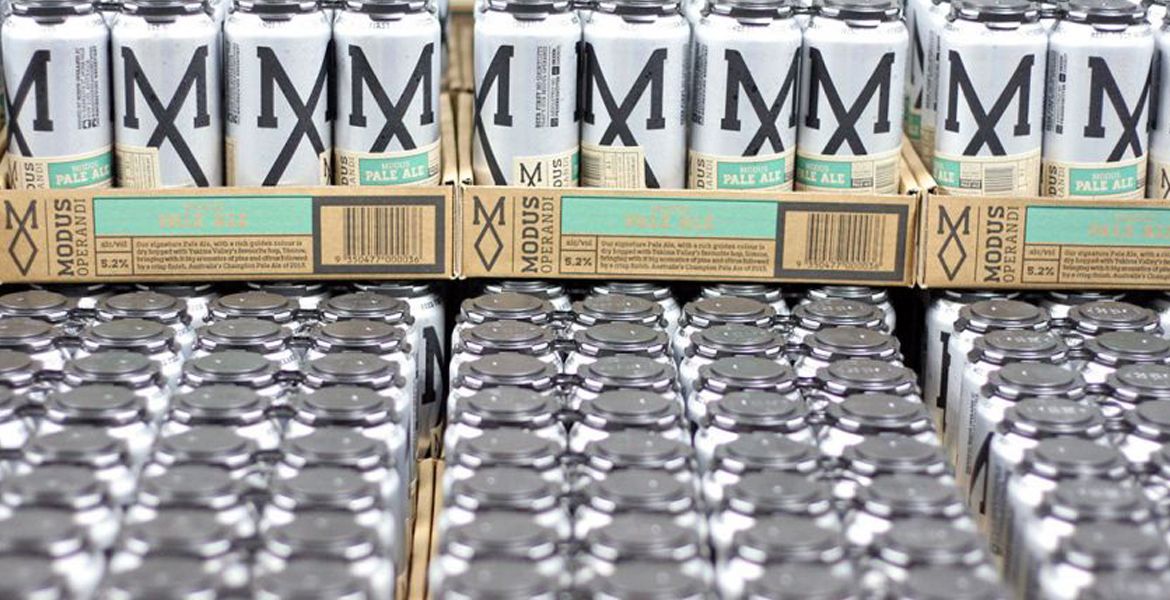
“There are two levers: quality and price,” says Modus Operandi founder Wearin, when discussing how a retailer or drinker chooses what beer to buy. “Anyone reading this article knows that we [small, independent brewers] can’t compete on the price lever against a multinational so the only thing left to compete on is quality.”
And here is an area – quality – in which, on a technical and consistency level, the highly resourced multinationals traditionally have an advantage, but which, in areas such as flavour, ingredients, provenance and “a whole raft of factors”, Wearin believes the smaller operators have a chance to carve out their niche.
Throughout almost every conversation and interview carried out in the course of compiling this article and the one that preceded it, quality has been raised at some point. Indeed, it’s a common thread through almost any discussion of the issues facing craft brewers today, on a par with those such as honesty, transparency and education.
Ken Grossman, when asked whether selling to a major brewery or taking significant outside investment was now the only viable option for larger craft brewers, says: “I don’t think so. Beer consumers are adventurous and always on the hunt for the next best thing. I think you become a major player by providing quality, innovative products. There are lots of independent brewers in the US who are still doing that and doing it very well.”
Then there’s Treanor on the rising tide of imports into Australia: “It starts and ends with the quality of the beer. If we brew the best quality and freshest beer for our drinkers than that’s what Australia wants.”
Or Brad Rogers, of Stone & Wood, in a discussion about the likely impact of Goose Island landing in Australia: “At the end of the day, I’m a very firm believer that good quality beer survives. Across what we’ve been able to do with Stone & Wood and Fixation, at the heart and soul of what we do is to make good, quality consistent beer and I don’t think Goose Island is going to be anti that.”
Or, indeed, Goose Island CEO Ken Stout on the rampant growth of breweries in America: “Here’s the thing: as the beer IQ improves it’s not enough for a brewery to be small or local. Those are great things – it’s great to have a brewery in your neighbourhood – but if the beers aren't great there are too many other options.
“It’s like opening a pizza parlour in Chicago. We have a lot of pizza parlours, so when a new one opens it has to be really good because people already have their favourites. So I’ll try a new one, no problem, but if it’s no good I’m never going back. Why would I waste my time? It’s the same thing with the beer, you only have one chance to impress.”
As in Chicago, the beer landscape in Australia continues to shift ever faster and in ever more directions to the point where it seems every day, let alone week or month, brings something new of significance. Since we embarked on this article alone, the US BA has launched its Indie Beer seal, new figures from the States have shown large craft brewers including Boston Beer, Sierra Nevada, Deschutes and Gambrinus experiencing falling sales while there’s been a write down in the value of billion dollar purchase Ballast Point.
In the same period, Lagunitas became a wholly owned subsidiary of Heineken, Brooklyn Brewery has entered into new partnerships with Carlsberg in Hong Kong and London, Anthony Albanese MP has led a cross-bench appeal for more support for small brewers in Australia, while the recently relaunched body representing many of those brewers, the Independent Brewers Association, has kicked off a campaign of its own. And that’s just a smattering of stories that reveal the changing nature of craft – or “craft” – beer today, both locally and globally, and increasingly where the two collide.
So where does this leave the Australian market? In all likelihood set for the sort of realignment also underway in the US, maybe more akin to the one the US experienced from the late 1990s than the contemporary version; after all, when Australia’s fledgling craft beer industry experienced its own collapse in the 1990s, it wasn’t nearly as developed as the US at that point.
HEAD HERE TO VIEW A TIMELINE OF CRAFT BEER IN THE US & AUSTRALIA
Such a prospect may be less than appealing, particularly for those local businesses already struggling, but, perhaps, here is one area in which it pays to be trailing in US brewers’ wake.
That we’ve already got more breweries per capita than the US, that too many brewers are fighting over the same turf rather than defining their own, and that the overall pie here is around a quarter of that in the States when it comes to consumption of independently owned beer, are all potential – and significant – challenges. But brewers and brewery owners here also have the chance to study a far more mature market, see who has succeeded and why, study how that industry is evolving and try to bring those lessons to bear on their own businesses. The smart ones should survive and thrive.
Down the line, if our local industry continues to grow and Australian drinkers continue to back homegrown brewers and seek the freshest beer they can, the increasingly competitive market may even end up turning the squeeze back onto the imported brands currently contributing to that squeeze. Certainly, it’s a situation that, according to Roper, has arisen in the States, even if it’s not garnered much attention as yet.
“I had a meeting with an importer for Trappist beers from Belgium and you'd think they wouldn't be hurt because their beers are unique and fantastic,” he says. “Sales had dropped 35 percent in the last two years.
“Some brands have vanished from shelves. Breweries are pulling out of the market. There used to be a case of ‘Imports are good, American beer is bad – if you want something better, spend an extra buck or two and get an import’. Now it’s almost the opposite.”
One cause of this turnaround, aside from the quality of American beer, is education: US brewers and their supporters educating people at home and then abroad so they're aware there’s more to the country’s beer offering than light lagers. In Australia, this process of educating the public remains very much a work in progress, with a responsibility on the industry – brewers, retailers, beer lovers and publications such as Brews News, this and other beer sites – to educate and inspire those outside the bubble too.
The Ken Stout quote with which we opened this article: “We think, over time, there’s going to be a shake up and not everyone is going to stay open” continues: “I hope they do, I’m not wishing anyone ill will – but what I really do want is for the consumer to know the difference between really high quality beer and not so high quality beer.”
The more people know about beer, be that in terms of quality, style or provenance, the better informed they are to make a choice, whether that’s opting for a Goose Island IPA over a Fat Yak in a CUB pub or an independently brewed beer over one from a brand that’s no longer independent. Education of the consumer, not to mention the broader media, about just how diverse, rich and fascinating beer can be remains an area in which we lag behind the US, albeit one in which great strides have and are being taken.
“Aussies are a far more sophisticated consumer than they were five years ago,” says Wearin. “They’re not stupid and won’t be shortchanged any more.”
If he’s right, and if the craft beer industry and its supporters can explain why what they are doing is worthy of support – and back it up with the standard of their beer and the experience that surrounds it – then it should be able to face the mounting challenges from a position of greater strength.
Whatever is on the horizon, Atkinson says: “It’s the best time we’ve ever had to drink beer in Australia in terms of the amount of great beer out there and the variety of styles. It’s going to be an interesting year – or couple of years – because there’s so much happening.
“The market is getting so crowded and there will be a bit of a shake out. There will be some businesses that don’t have their business model right – I just don’t see how these new openings can be sustainable.
“But there are a lot of reasons to be positive about where we’re at.”
We've created an Infographic highlighting some of the key moments in American and Australian craft beer history. View it here.
Reporting from Chicago by Nick Oscilowski, who travelled to the US as a guest of Goose Island.






